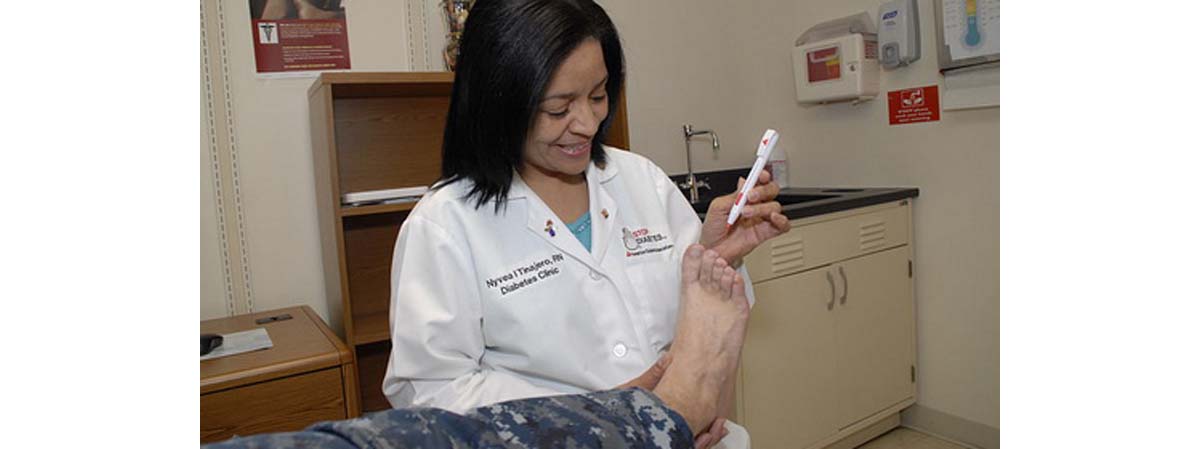Table of Contents
Tissue death that necessitates amputation is perhaps the most gruesome consequence of poorly controlled diabetes. After 10 to 15 years of high blood sugar levels, many diabetics begin to lose sensation in their feet, beginning at the tips of the toes and deteriorating backwards, up the leg.

What Is Debridement?
Debridement is a process of cleaning a wound so thick, callused, dead skin does not interfere with circulation in healthy tissue below it. Most of the time doctors clean wounds with a process called surgical debridement.
If the wound on the foot is small, the doctor or podiatrist may simply use a disposable scalpel to cut off dead skin right down to healthy skin. It may not even be necessary to use an anesthetic. Debridement of small wounds can be completely painless, especially when diabetics suffer neuropathy, and only a few droplets of blood may be lost in the procedure.
For larger wounds, it may be necessary to administer an anesthetic or even to put the patient under general anesthesia, as the doctor cuts away dead tissue until the wound just starts bleeding, without cutting into healthy tissue. Since many diabetics are treated with blood thinners, such as Plavix, Coumadin, or (when they have had heart attacks) Brilinta, the doctor may put a tourniquet on the leg during the operation to stop bleeding.
After all the dead tissue is removed, bleeding is stopped, and the tourniquet is removed, the doctor covers the wound with a moist, non-adhesive dressing. Typically this is a layer of moist gauze held in place with tape. The dressing has to be changed every day to prevent infection, and the wound has to be inspected regularly for accumulation of pus and new scar tissue, which also have to be removed.
The thought of debridement is upsetting, but usually it doesn't hurt. And debridement doesn't always have to be performed by a surgical method.
Alternatives to Surgical Debridement
Diabetes doctors also perform chemical, biological, autolytic, mechanical, and ultrasound debridement when surgery is contraindicated. Of these methods, the one that diabetics can emulate is autolytic debridement, in which an area of tough skin is kept moist so that it softens and peels away on its own. This procedure can't be done on an open wound, but it is possible to soften and shrink a callus by frequent use of moisturizer under clean socks.
- Morbach S, Furchert H, Gröblinghoff U, Hoffmeier H, Kersten K, Klauke GT, et al. Long-Term Prognosis of Diabetic Foot Patients and Their Limbs: Amputation and death over the course of a decade. Diabetes Care. Jul 18 2012.
- Lebrun E, Kirsner RS. Frequent Debridement for Healing of Chronic Wounds. JAMA Dermatol. 2013 Jul 24. doi: 10.1001/jamadermatol.2013.4959.
- Photo courtesy of U.S. Navy photo by Culinary Specialist 2nd Class Michelle Pereira by Wikimedia Commons : commons.wikimedia.org/wiki/File:US_Navy_111104-N-PE811-001_Naval_Hospital_Jacksonville_diabetes_education_nurse_Nyve_Tinajero_checks_a_patien
- Photo courtesy of Intermedichbo by Wikimedia Commons : commons.wikimedia.org/wiki/File:Diabetic_Wound_after_HBOT.JPG


Your thoughts on this